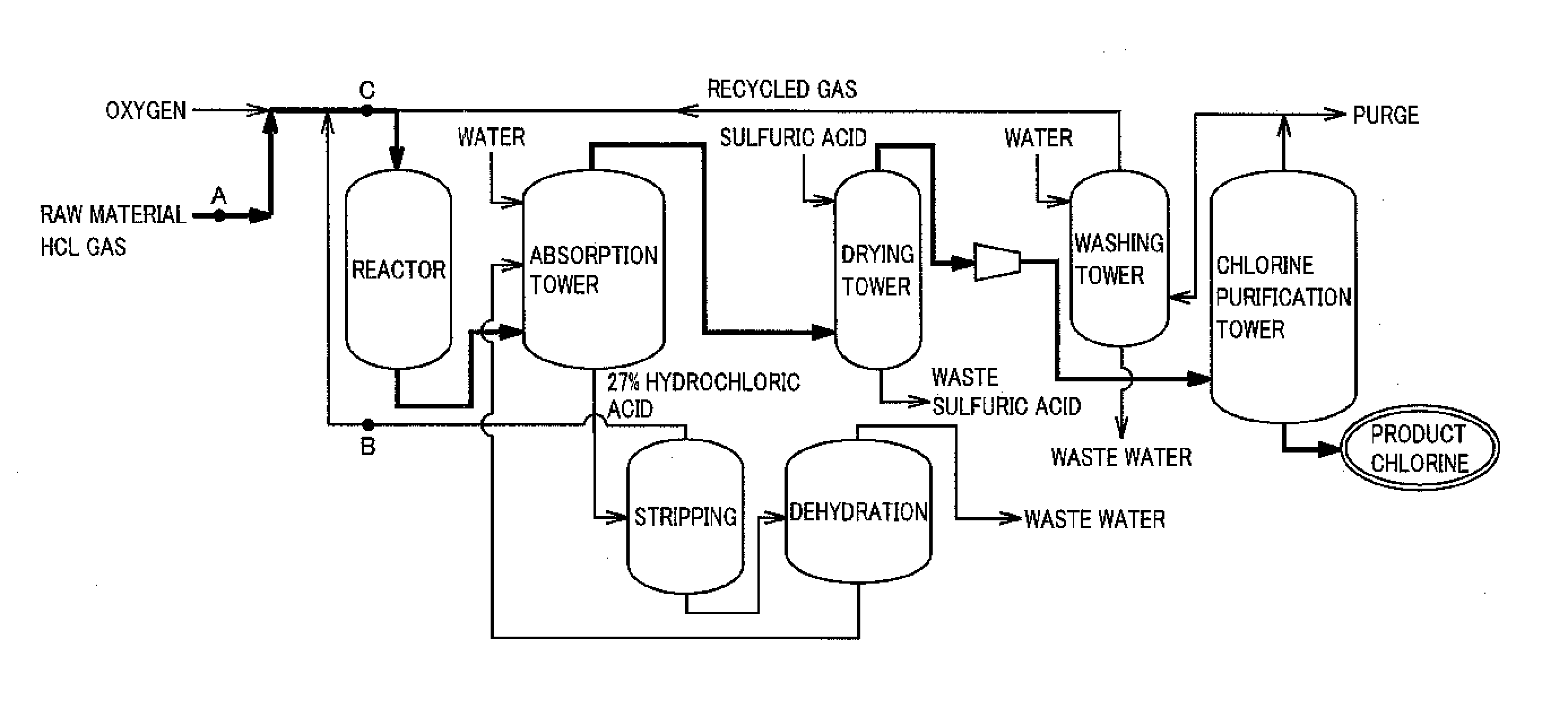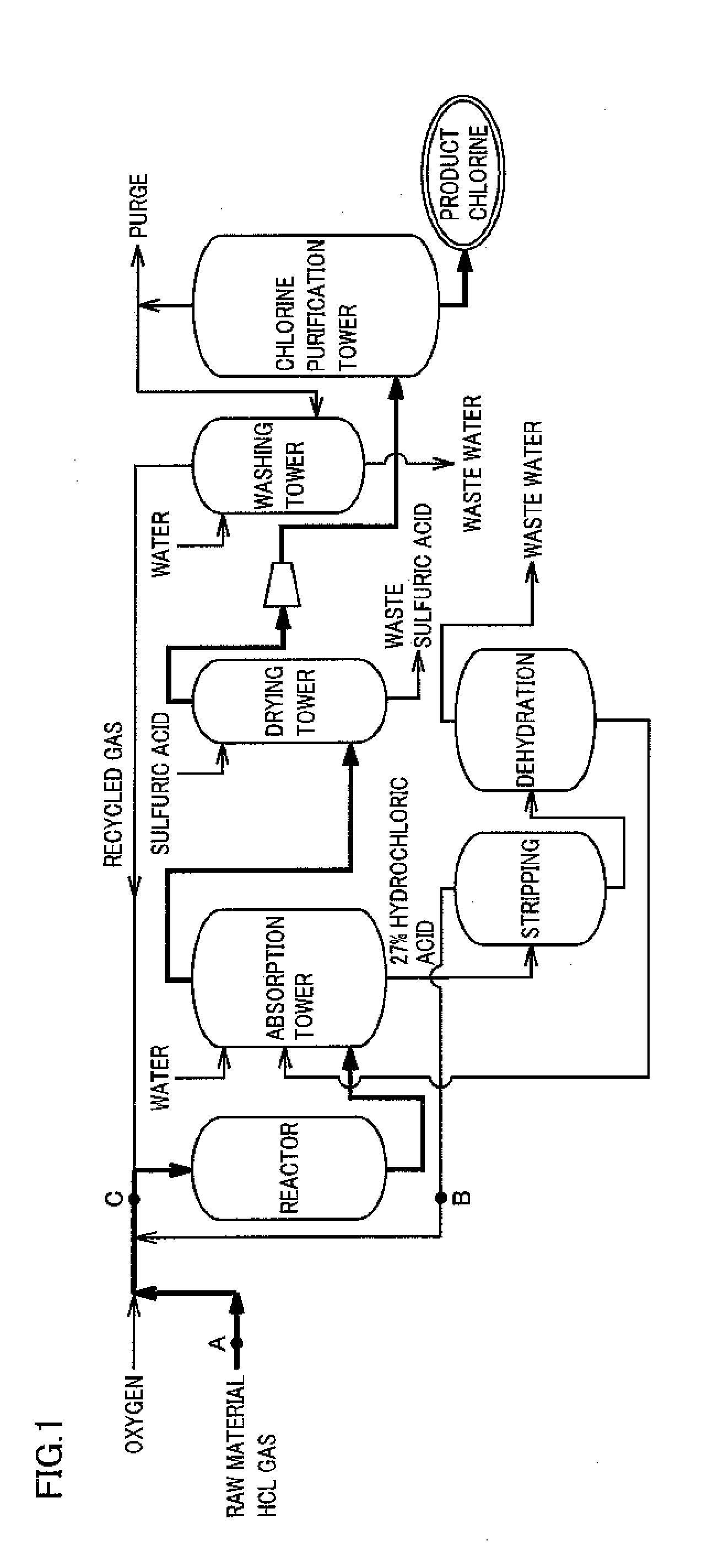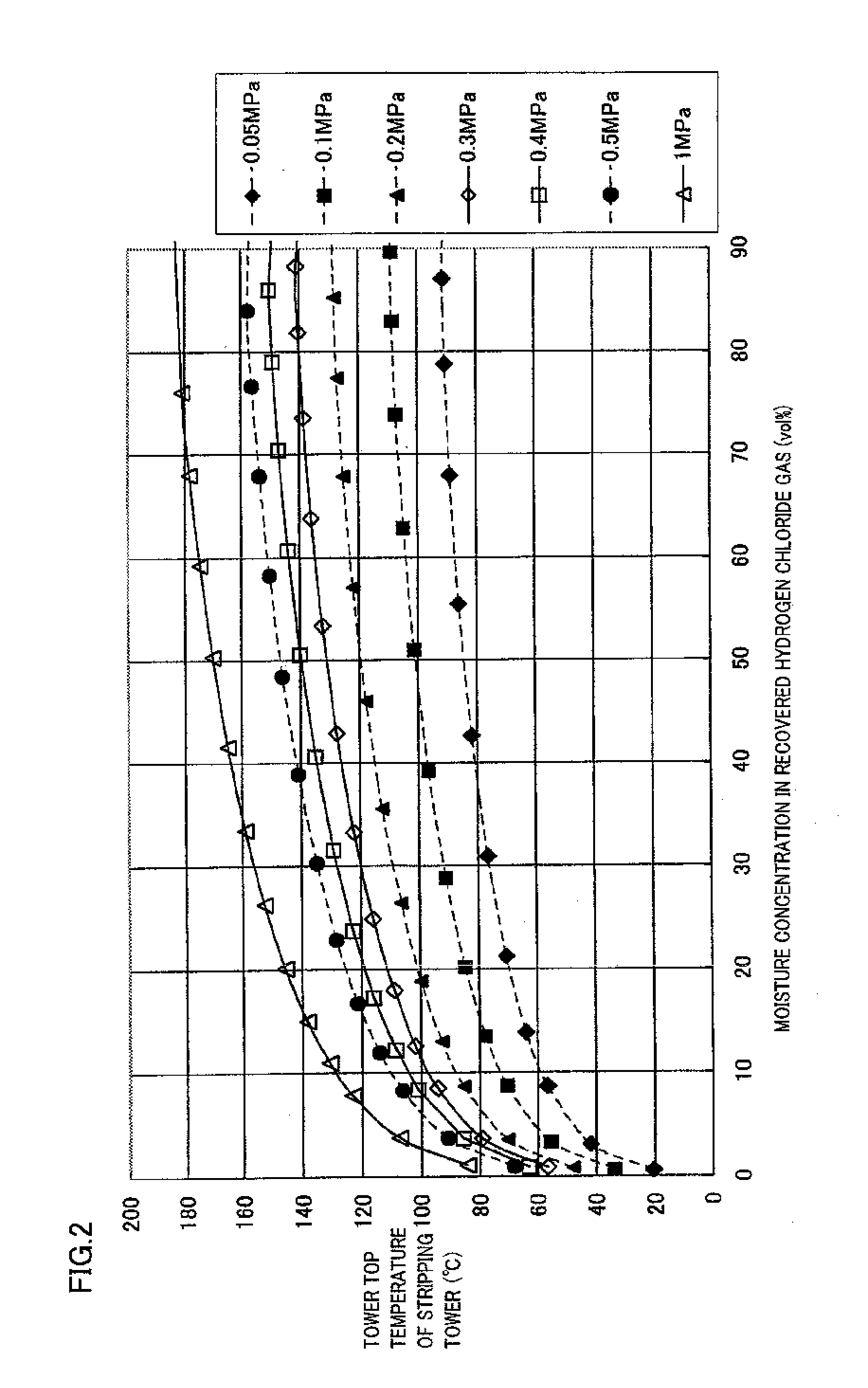Method for producing chlorine
a technology of chlorine and chlorine chloride, which is applied in the field of chlorine production, can solve the problems of difficult to use inexpensive materials such as resin-impregnated carbon, difficult to separate hydrogen chloride and water, and expensive apparatus materials, etc., and achieves the effects of high yield, efficient separation, and efficient supply of moisture into the oxidation step
- Summary
- Abstract
- Description
- Claims
- Application Information
AI Technical Summary
Benefits of technology
Problems solved by technology
Method used
Image
Examples
Embodiment Construction
[0020]The present invention will be described more in detail below.
[0021]FIG. 1 is a flow chart schematically showing a preferred example of the method of the present invention for producing chlorine. The outline of the present invention is a method of oxidizing hydrogen chloride in a raw material gas containing hydrogen chloride and impurities with a gas containing oxygen, thereby producing chlorine.
[0022]As the raw material gas in the present invention can be used any gas containing hydrogen chloride generated in, for example, a thermal decomposition reaction or a combustion reaction of a chlorine compound, a phosgenation reaction or a chlorination reaction of an organic compound, and combustion in a combustion furnace.
[0023]It is preferable for the raw material gas in the present invention that the concentration of the hydrogen chloride in the raw material gas be 10% by volume or more, and a raw material gas having preferably 50% by volume or more, and more preferably 80% by volu...
PUM
| Property | Measurement | Unit |
|---|---|---|
| temperature | aaaaa | aaaaa |
| particle diameter | aaaaa | aaaaa |
| mean particle diameter | aaaaa | aaaaa |
Abstract
Description
Claims
Application Information
 Login to View More
Login to View More - R&D
- Intellectual Property
- Life Sciences
- Materials
- Tech Scout
- Unparalleled Data Quality
- Higher Quality Content
- 60% Fewer Hallucinations
Browse by: Latest US Patents, China's latest patents, Technical Efficacy Thesaurus, Application Domain, Technology Topic, Popular Technical Reports.
© 2025 PatSnap. All rights reserved.Legal|Privacy policy|Modern Slavery Act Transparency Statement|Sitemap|About US| Contact US: help@patsnap.com



